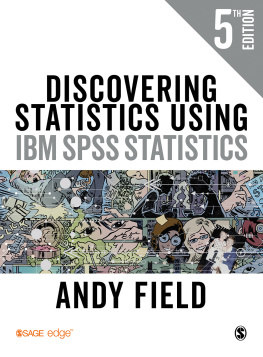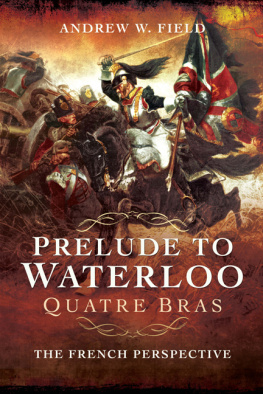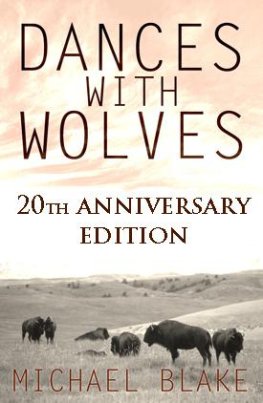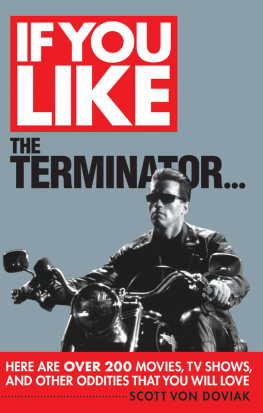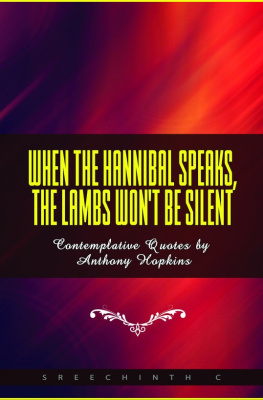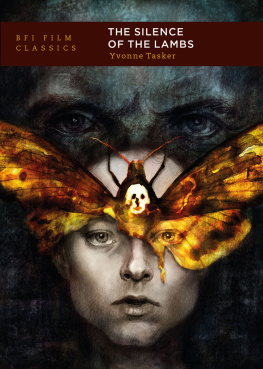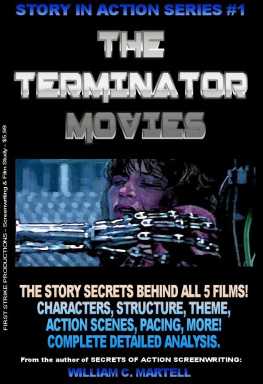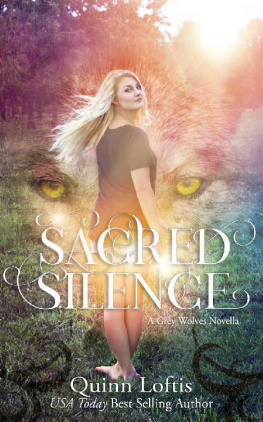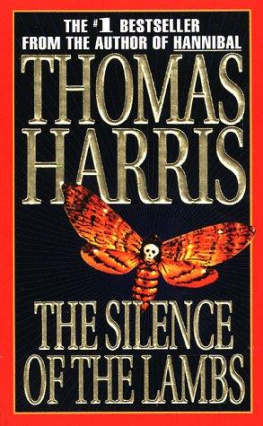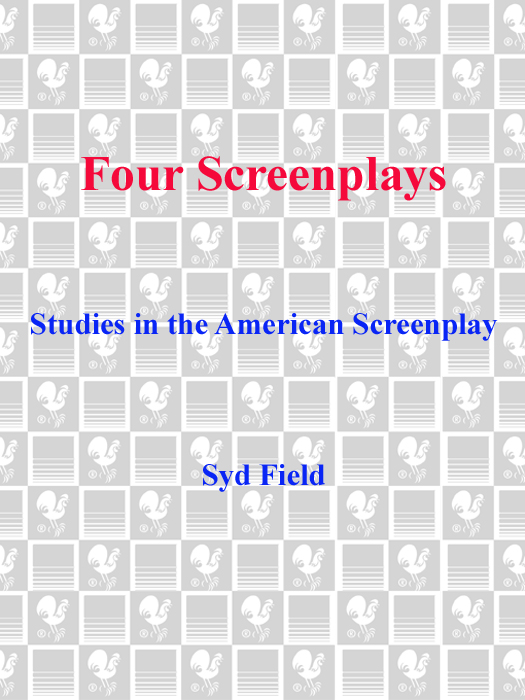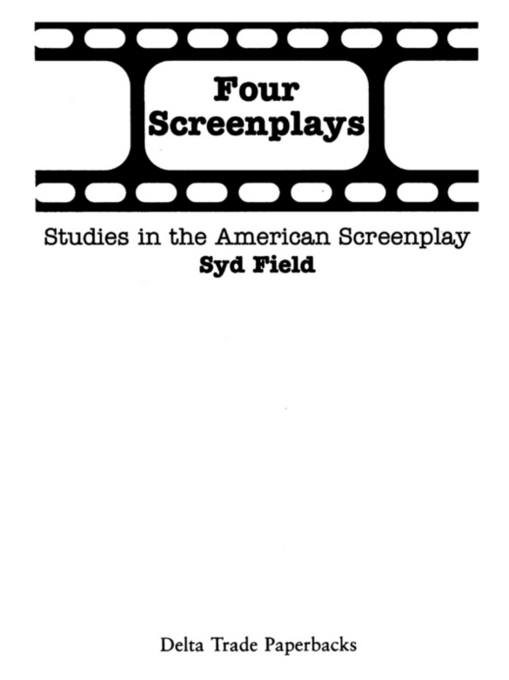Praise for Four Screenplays:
This is a book that writers will stand in line for and studio executives will Xerox. James L. Brooks, writer-director-producer, Terms of Endearment, Broadcast News, The Mary Tyler Moore Show, and The Simpsons
Theory comes alive with this hands-on approach to what makes four great screenplays tick. Deborah Newmyer, Senior Vice President of Development, Amblin Entertainment
Four Screenplays is not only Syd Fields most instructive book its the most fun to read. Anna Hamilton Phelan, screenwriter, Mask, Gorillas in the Mist, and Parting the Waters
A first-rate analysis of why good screenplays work: a virtual must for aspiring screenwriters. Linda Obst, producer of The Fisher King and Sleepless in Seattle
Its a fascinating view into the most overlooked process of film making.
Michael Bresman, Executive Vice President of Production, TriStar Pictures
This is one of the very best books I have read on movies or screenplays. Syd writes both with passion and an astute understanding for me personallyI only wish hed written his chapter on Thelma and Louise before I started work on it because it would have made my contribution a lot better. But then, by reading Syds book I get the chance to carry some of the clarity he brings to a project forward into my future work.
Hans Zimmer, film composer, Thelma and Louise
APPLAUSE FOR SYD FIELDS
CRITICALLY ACCLAIMED BOOKS
ON SCREENWRITING:
SCREENPLAY
Quite simply the only manual to be taken seriously by aspiring screenwriters.
Tony Bill, coproducer of The Sting,
director of My Bodyguard
The complete primer, a step-by-step guide from the first glimmer of an idea to marketing the finished script.
New West
The basics of the craft in terms simple enough to enable any beginner to develop an idea into a submittable script.
American Cinematographer
A MUCH-NEEDED BOOK straightforward and informed. Facts and figures on markets, production details, layout of script, the nuts and bolts, are accurate and clear, and should be enormously helpful to novices.
Fade-In
Experienced advice on story development, creation and definition of characters, structure of action, and a direction of participants. Easy-to-follow guidelines and a commonsense approach mark this highly useful manual.
Video
Full of common sense, an uncommon commodity.
Esquire
IMPRESSIVE His easy-to-follow step-by-step approaches are comforting and his emphasis on right attitude and motivation is uplifting.
Los Angeles Times Book Review
SELLING A SCREENPLAY
Syd Field is the preeminent analyzer in the study of American screenplays. Incredibly, he manages to remain idealistic while rendering practical how to books.
James L. Brooks, scriptwriter, The Mary Tyler Moore Show, Terms of Endearment, Broadcast News
An informative, engaging look at this inside of the dream factory. This is a terrific aid for screenwriters who are trying to gain insight into the Hollywood system.
David Kirkpatrick, producer, former head of Production, Paramount Pictures
A wonderful book that should be in every filmmakers library.
Howard Kazanjian, producer, Raiders of the Lost Ark, Return of the Jedi, More American Graffiti
FOUR SCREENPLAYS
A Delta Book
PUBLISHING HISTORY
Dell trade paperback edition published September 1994
Delta Trade Paperback edition / November 2006
Published by
Bantam Dell
A Division of Random House, Inc.
New York, New York
All rights reserved
Copyright 1994 by Syd Field
The Silence of the Lambs: screenplay copyright 1991 Orion Pictures
Corporation. All Rights Reserved.
Library of Congress Catalog Card Number: 93-49467
Delta is a registered trademark of Random House, Inc., and the
colophon is a trademark of Random House, Inc.
eISBN: 978-0-307-56952-3
www.bantamdell.com
v3.1
If it aint on the page,
it aint on the stage.
OLD H OLLYWOOD EXPRESSION
Contents
Introduction: Four Themes,
Four Screenplays
Introduction:
Four Themes, Four Screenplays
Screenwriting is a craft that occasionally rises to the level of an art. Like film, it is a unique and special form that is constantly shifting and changing, mirroring the needs and concerns of our time. As a result, each generation brings a new eye and a new sensibility to the screenplay.
It was during the 80s that screenwriters, weaned on the curricula of TV, film schools, and the computer, began to explore and elevate the language of screenwriting and explore new areas of our collective mythology and spirituality.
As a result, films today have literally become more real. Scenes and situations once considered impossible to shoot are now depicted with real reality: Look at Boyz n the Hood (John Singleton), or Menace II Society (Tyger Williams), or El Mariachi (Robert Rodriguez and Carlos Gallardo). Locations once thought inaccessible to the filmmaker are now accessible: Look at Cliffhanger (Michael France and Stallone), where the real star of the movie is the breathtaking region in the Alps where the movie was shot. Look at special effects, at how much the field has expanded in just a few years, merging the art and science of computer graphics into films such as Terminator 2: Judgment Day, or Jurassic Park (Michael Crichton and David Koepp). The computer software created for Terminator 2 allowed Dennis Murren, of George Lucass Industrial Light and Magic unit, to create the software that made the reality of the dinosaurs in Jurassic Park so real.
At the same time, screenwriters discovered the work of the noted scholar/philosopher Joseph Campbell, who charted the vast oceans of mythology, presenting a contemporary perspective to a generation hungry for myth. His ideas of the story and structure of myth have influenced screenwriters everywhere.
For several years Ive been traveling around the world, teaching seminars and workshops on screenwriting. And everywhere Ive gone, Ive analyzed and discussed the American screenplaywith foreign governments and their ministries of Culture, with screenwriters and filmmakers, with diplomats and businessmen, with actors and technicians. Everyone, no matter what country or culture, is interested in learning more about screenwriting.
Movies have become so much a part of our lives that sometimes we forget how much they can influence behavior, or our ways of thinking. The two most popular majors in colleges and universities across the land are business and film.
Movies are a form of contemporary myth, and our heroes set out on their adventures in front of a tremendous audience. Technology, contemporary spirituality, and the enormity of todays audience have changed the American screenplay and the way American screenwriters are telling their stories. Todays screenwriters are finding new ways to tell a story. The four films Ive chosen to analyze all represent this change.
When I saw Dances With Wolves, I realized it was influenced by some of these cultural shifts. On the surface it was a Western, a dust picture, which, in Hollywood at the time, was taken for granted as being dead and buried. However, the journey of Lieutenant John Dunbar to the farthest point of the frontier embodied a mythic structure found in Joseph Campbells work; Michael Blake dramatized the heros journey with perception, wit, and understanding.


